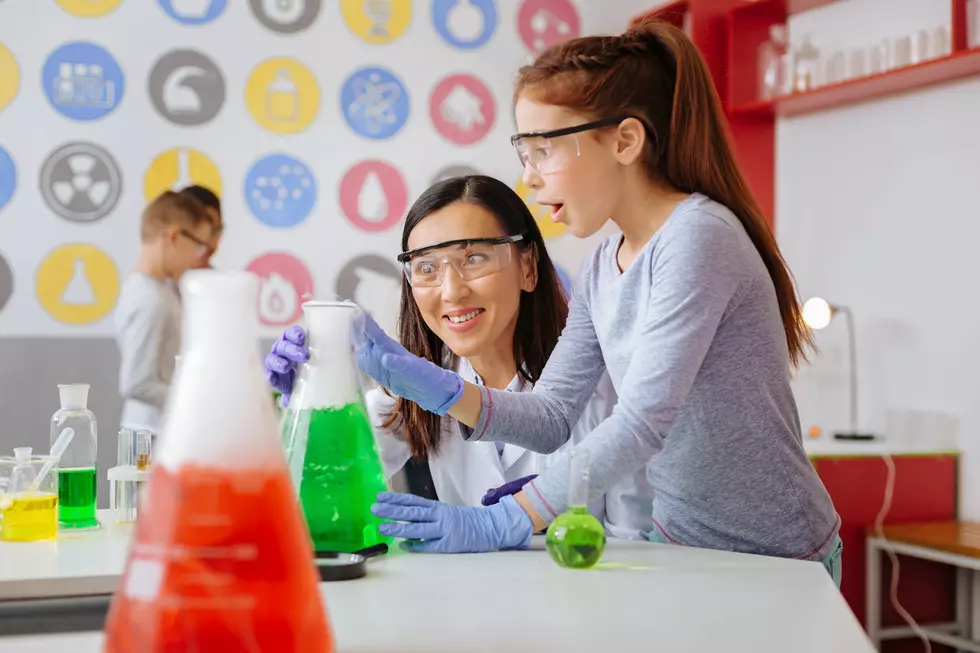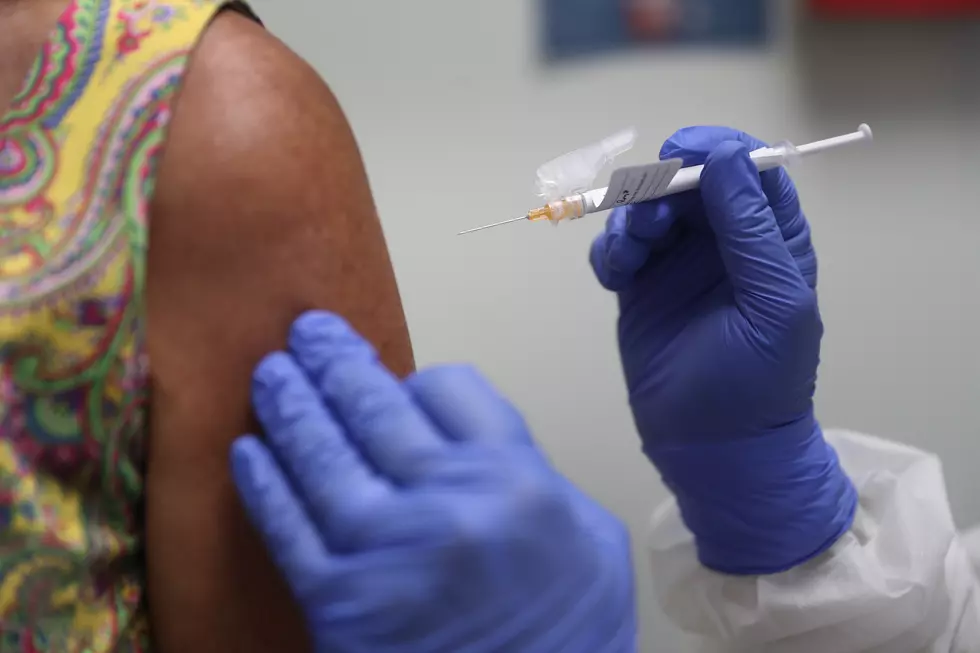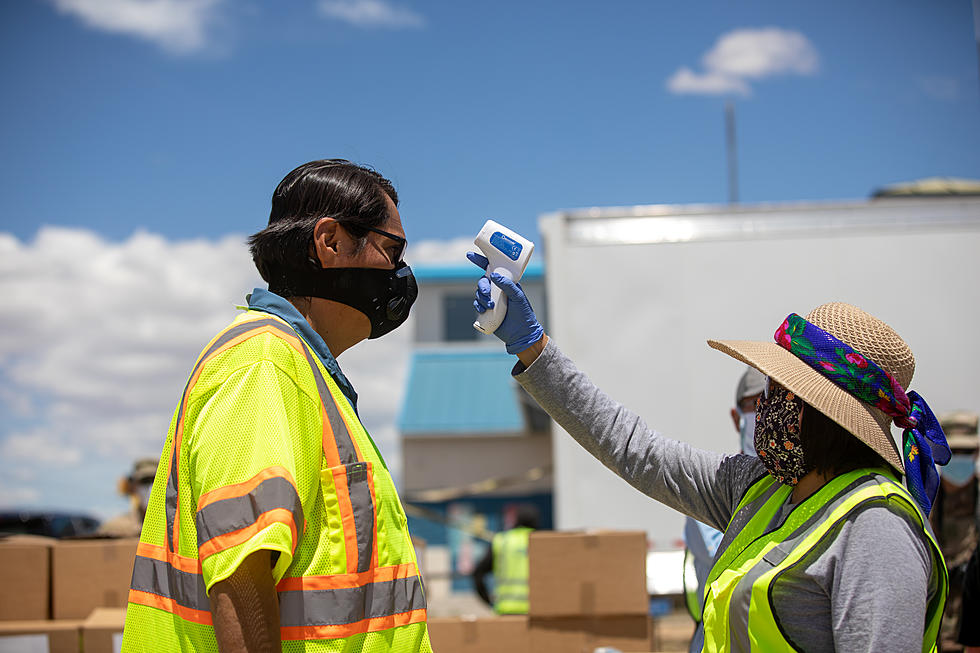
The Discovery Center Brings Science Experiments To Your Home
Whether you knew it or not, you have a science laboratory right inside you home! While the Don Harrington Discovery Center is closed to the public, they are still providing plenty of fun activities that the entire family can take part in. They have launched a new multi-episode video series called "Discover At Home." They are adding new videos all the time, so make sure you not only check out the ones below, but follow the Don Harrington Discovery Center on YouTube, Facebook, and Instagram. Which one of these experiments are you and the family going to try first?
‘Magic Milk’ here!
Description: This explosive reaction happens with the magic of soap molecules. When you combine the soap with the fat in the milk, it will begin jumping around. Dish washing soap molecules pull in fat molecules to part of it. When the molecules attach, they will move around to make sure that every molecule is paired up, and this is what will make the color shoot around in the pan!
Convection Currents
Description: We see convection currents in weather and in the oceans when you have a big difference in temperature. Hot water or air takes up a lot more space (is less dense) than cold water or air. In this experiment, the hot water will sit on top of the cold water without mixing because the water molecules will spread out (just like when you are hot, you don’t like to be right next to your friends) and the colder water molecules will condense together and take up less space. The hot water can’t muscle its way through the colder water because there’s not enough space for it to fit, so it will sit on top. When you have the cold water on the top, the hot water will want to find room to expand, and move upward, mixing the colors together.
Baking Soda & Vinegar
Description: Why is mixing vinegar and baking soda so exciting? Because it gets a (chemical) reaction! A chemical reaction happens when you have two chemicals that combine to form something new. Baking soda (sodium bicarbonate) is alkaline (basic) and has a higher pH than 7 on the pH scale. Vinegar (acetic acid) is acidic and has a pH lower than 7. Whenever you mix the two, the hydrogen atoms mix together to form an acid-base chemical reaction. The “new” things that we form when these two ingredients are mixed together (carbonic acid and sodium acetate) will have a SECOND chemical reaction called a decomposition reaction where these new ingredients will break down into water and carbon dioxide (the stuff we breathe out).
Friction Balloon
Description: There are a lot of forces at play here. When you spin the hex nut around the balloon you are using centripetal force to push it against the balloon as it rolls in a circle. As it does this, the nut will bounce as it spins causing friction with each of its 6 points. This friction makes the balloon vibrate causing a crazy, screaming noise to come out of the balloon.
Paper Airplanes
Description: In order to make something fly, or glide, both gravity and the air play a role. Gravity will pull an object down, and the air will help hold it up. If you drop a piece of paper, it will swish back and forth as it falls. It has to push the air aside as it makes its way down, and because a flat sheet of paper has a lot of surface area, it will fall slowly. Now, ball up that same piece of paper, and see if it falls at the same rate. In order for something to glide, there must be a balance between the gravity that pulls and the lift provided by the air, and the design of the aircraft is important in this balance. Flat fliers add drag on the tips of their wings, and the hoopster design will take that away.
Oobleck
Description: Oobleck is a funny substance that can behave like both a liquid and a fluid at the same time. These special substances are called non-Newtonian fluids. When you punch the oobleck, the particles are so close together, it is really hard for them to move around when a force is applied quickly, and it will act like a solid. When forces are slowly applied (like gravity), Oobleck will behave like a liquid and fill a container.
Parachutes
Description: Parachutes were designed for one basic purpose: to slow down falling. A parachute will use the air to “drag” against as it moves toward the earth. The canopy of the ‘chute hits the air molecules, causing resistance as it floats downward.
Easter Art
Description: While Easter may be behind us, you can still try this really cool art. Try making this Easter art using simple household supplies. You’ll need a large pan, shaving cream, food coloring, egg shaped paper, a toothpick and something to scrape off the excess shaving cream.
Bouncy Eggs
Description: For this one, you will just need: Raw Egg, Vinegar, Water and a Bowl.
Inertia Egg
Description: Inertia is the name for the tendency of an object in motion to remain in motion, or an object at rest to remain at rest unless acted upon by a force. Try this cool trick testing inertia and let us know if you are successful! You will need: 3 cups half full (half empty?) with water, 3 toilet paper rolls (don’t waste that TP!), 3 hardboiled eggs (raw if you’re brave), towel, tray and a paper towel roll (optional).
Static Balloons
Description: Everything around us is made up of atoms, and atoms have a nucleus, protons, neutrons and electrons. The electrons in the atoms trade off sometimes and that is what will build up to shock you whenever you rub your socks on the carpet in the winter (or everyday in Amarillo). When you rub the balloon against your shirt and then hold it up to your hair, the electrons from the rubber and from your shirt have built up and want to connect with something else. In order to connect they have to move from one place to another and can create a force that can lift hair, paper, and even move cans around.
Salty Ice
Description: There’s plenty to learn from frozen water (or a frozen water balloon), starting with the patterns of bubbles—or lack thereof—in the ice.
More From 101.9 The Bull









